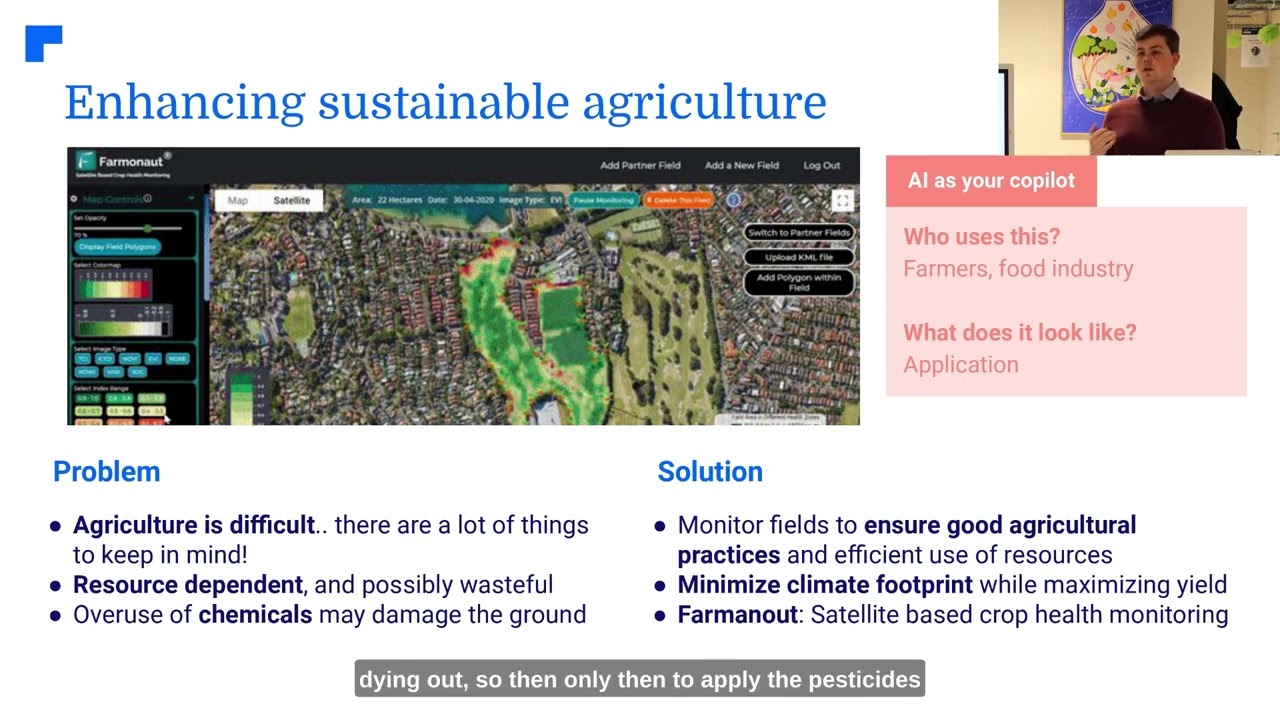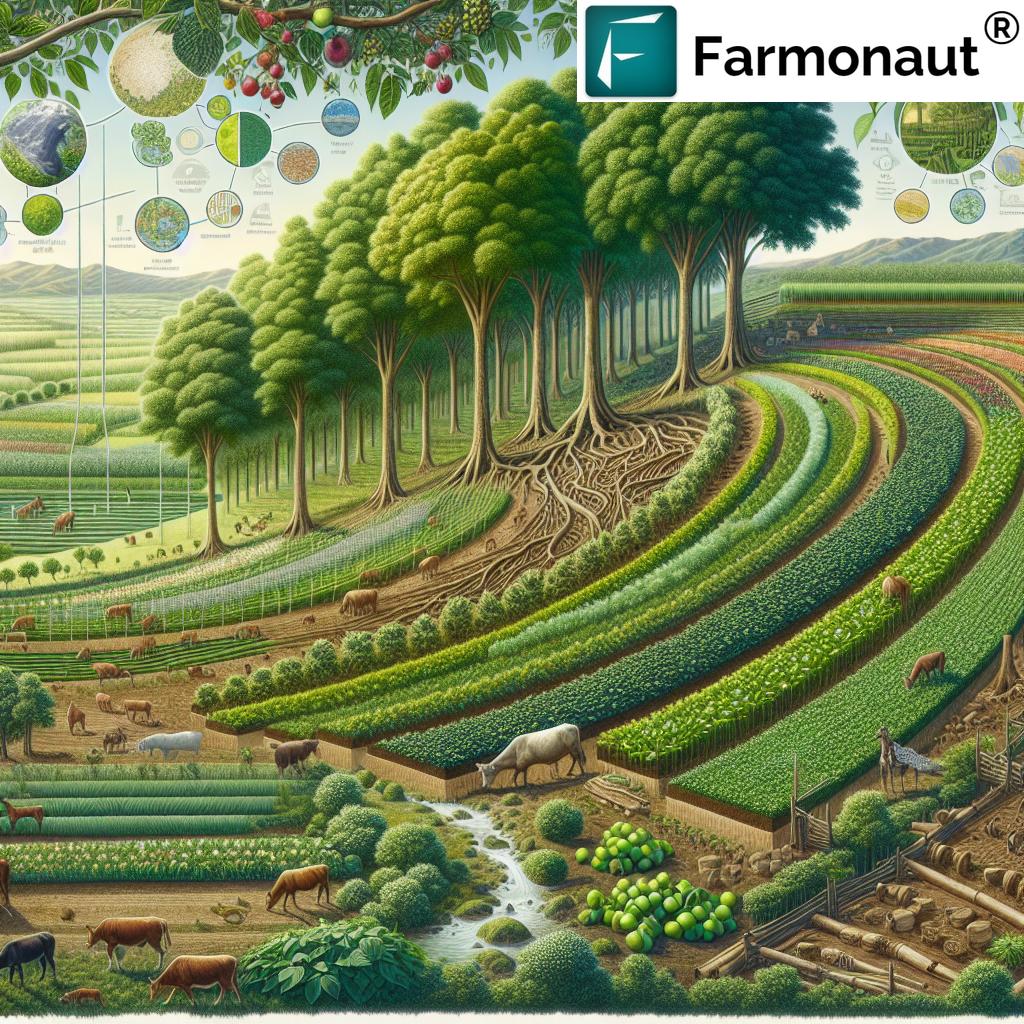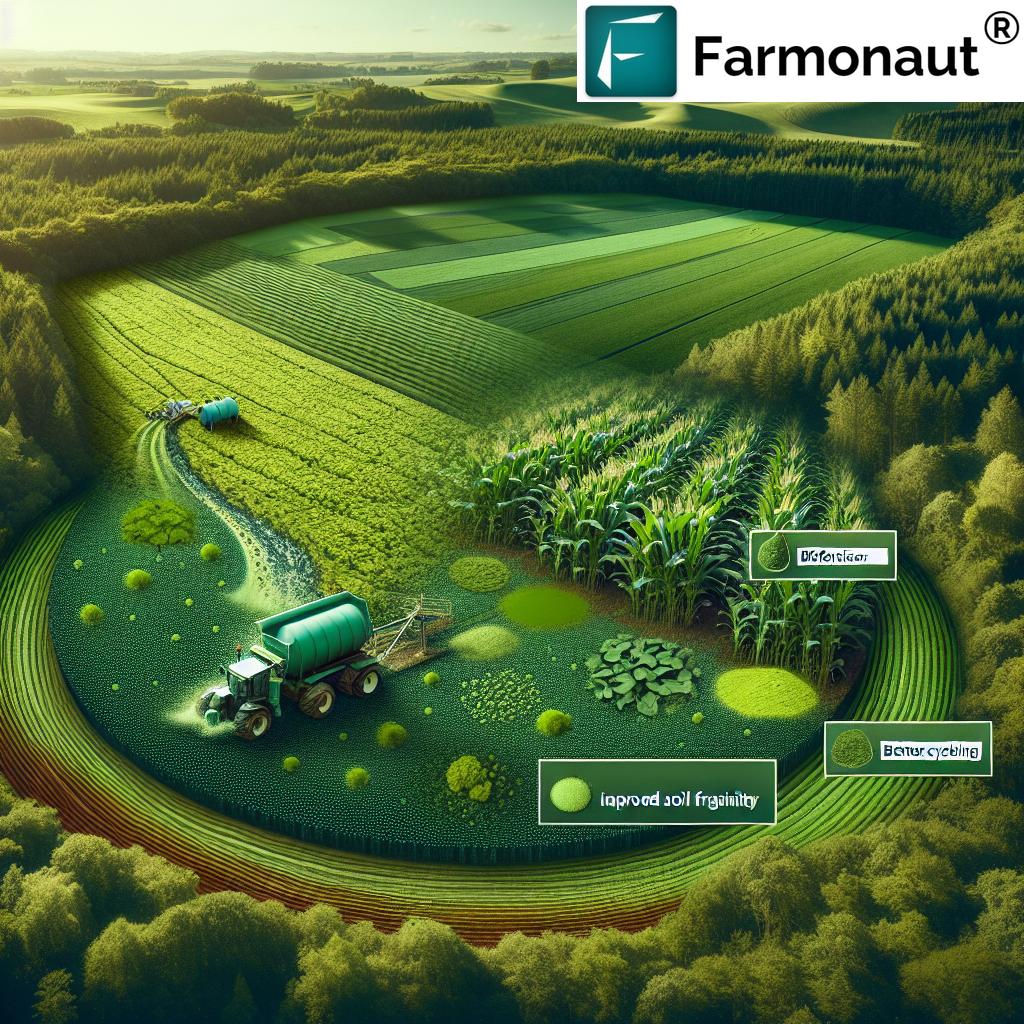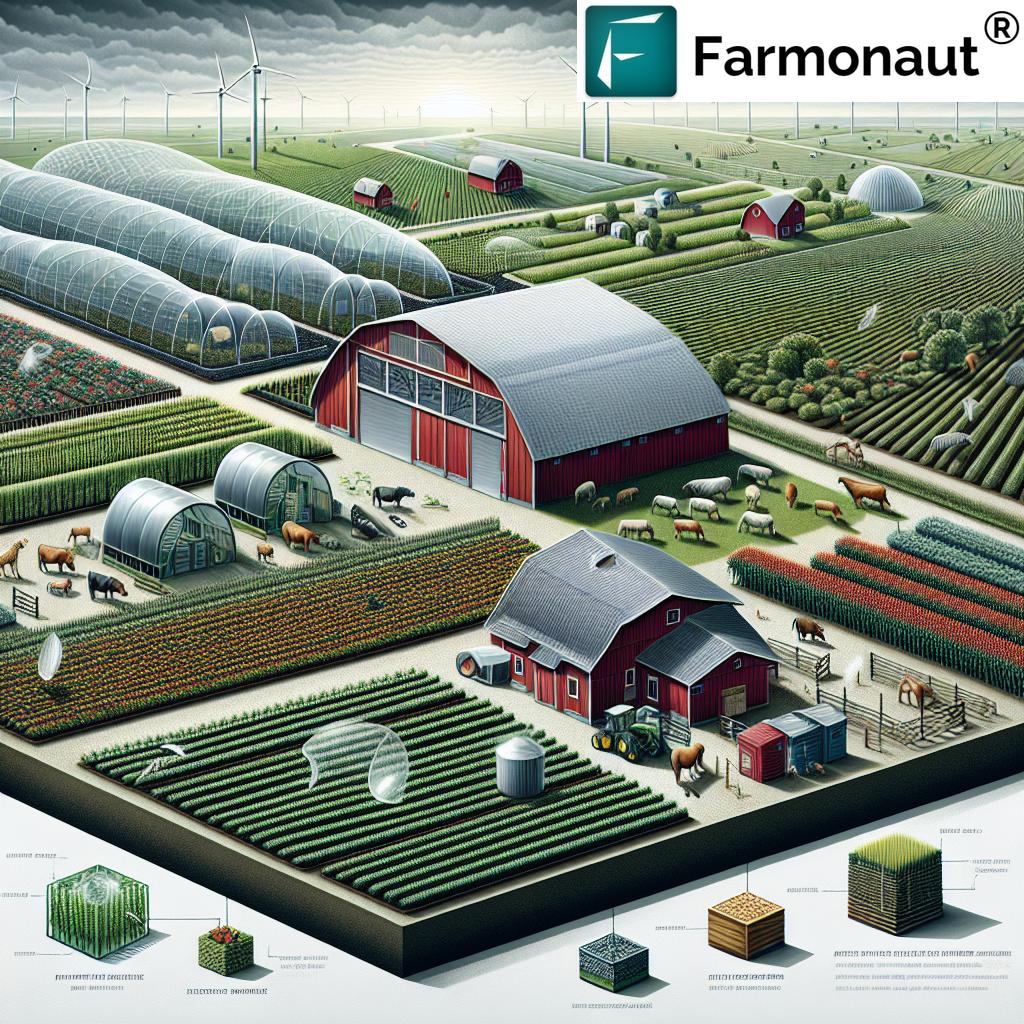“Up to 80% of terrestrial animals depend on forests, making logging a major threat to global biodiversity.”
How Does Logging Affect Animals? Shocking Wildlife Facts
When we think about logging—the process of cutting down trees for timber and other wood products—it’s clear the impacts reach far beyond the forest floor. The effects of logging on wildlife are profound, touching every corner of the ecosystem, from habitat loss and fragmentation, to biodiversity loss in forests, to climate change acceleration. As stewards of our planet, we must understand the full range of logging’s consequences and seek out sustainable forestry practices to help protect crucial ecosystems and the animal populations within them.
Let’s embark on an in-depth exploration of the impact of logging on animal habitats, the cascading ecological effects, and innovative solutions that can help us balance human needs with environmental preservation. We’ll also see how technological advancements—like those from Farmonaut—enable smarter, more eco-friendly management of forests and agricultural lands.
Focus Keyword: How does logging affect animals?
Habitat Loss and Fragmentation: The Impact of Logging on Animal Habitats
Habitat Loss Due to Logging: Detrimental Effects on Wildlife
One of the most immediate and visible effects of logging on wildlife is habitat loss. Forests are incredibly intricate, with multiple layers offering food, shelter, and breeding grounds for countless animal species. When these environments are cleared, animals lose everything from tree hollows essential for nesting to protective cover vital for survival.
For example, in Tasmania, and across other old-growth forest regions, several unique species—like 13 mammals and 29 birds—rely specifically on mature tree hollows for breeding and protection. With the removal of these ancient trees, their crucial nesting sites vanish, directly threatening their survival. (Source)
- Many mammal species require connected, mature forest for foraging and breeding—loss reduces animal populations.
- Numerous bird species cannot easily relocate to new areas, increasing the risk of local extinction.
- Some amphibians and insects are so specialized that the loss of a single habitat type means permanent disappearance from that area.
Forest Fragmentation Effects: Isolating Animal Populations
Beyond outright loss, logging often leads to fragmentation. Instead of one continuous habitat, the forest becomes a patchwork of “islands” cut off from one another. These divided patches severely disrupt animal movement, restrict gene flow, and increase the risk of inbreeding. Genetic health and species survival both plummet as populations shrink within isolated areas.
Take the Amazon rainforest as an example: extensive logging has transformed solid stretches of forest into isolated fragments, forcing wide-ranging species like jaguars and primates into diminishing spaces, making reproduction and survival increasingly difficult. (Source)
- Continuous habitats support healthy migration and breeding—fragmentation restricts both.
- “Island” habitats cause higher mortality due to increased competition and reduced resources.
- Movement restrictions can leave animals more vulnerable to predators and environmental changes.
Why Are Old-Growth Forests Particularly Crucial?
Many forest animal species, especially in regions like Tasmania, Australia, and the Amazon, depend on mature, old-growth habitats not just for food but also for specialized shelter:
- Koalas in Australia require specific eucalypt species—a loss of these trees directly impacts their populations.
- Northern spotted owl needs old-growth forests for nesting; the removal of these has led to dramatic declines in their population.
Learn more about monitoring the health of forests and plantations using Farmonaut’s Large-Scale Farm Management platform. It brings precision, allows us to track land changes and informs decisions for better forest management and conservation.
Disruption of Food Chains and Ecosystem Dynamics
When logging removes trees, it doesn’t just take away shelter. It disrupts entire food chains and fundamentally alters ecosystem structure. Trees form the base of the forest food web—supporting herbivores (like deer, insects, and small mammals), who in turn support predators.
- Removing primary producers starves herbivores, shrinking their populations.
- Fewer herbivores mean less food for carnivores and omnivores; populations at all levels decline.
- Carnivores and omnivores forced into new territories face higher risks of conflict, starvation, or falling prey to humans.
This disruption is often catastrophic when it causes the loss of keystone species—animals that play a critical role in maintaining their ecosystem. Without them, the entire system may collapse, leading to even further biodiversity loss in forests.
(Source)
Examples of Food Chain Disruptions Due to Logging
- In Australia, loss of canopy trees results in fewer leaves and fruit, starving tree-dwelling marsupials like the koala and glider possums.
- In the Amazon rainforest, forest fragmentation means larger animals—key seed dispersers—cannot move, causing regeneration of native trees to plummet.
- Insects lose their specialized host plants, causing ripple effects up the food chain to birds, bats, and amphibians.
Increased Vulnerability to Invasive Species
How Logging Opens the Door for Invasive Species
Disturbed forest areas—stripped of their original canopy—are often quickly colonized by invasive plants and animals. Native species often can’t compete with these aggressive invaders.
- Logging increases sun penetration, drying out soil and making it easier for invasive plants to thrive.
- Many invasive species flourish in disturbed soil, crowding out native flora and disrupting food sources for wildlife.
- Rapidly-changing ecosystem structure can drive native animals out, accelerate biodiversity loss, and sometimes cause pest outbreaks.
Australian Case: Bell Miner and Lantana
After logging in south-eastern Australia, invasive plants like lantana often take over. The bell miner—a native bird—then flourishes, preying on the insects living in lantana. However, bell miners aggressively drive out other birds that would have kept insect numbers in check, leading to ecosystem disruption. The result: declines in both insect and native bird populations and affects the food sources of other animals.
(Source)
“Over 18 million acres of forest are lost yearly, endangering countless wildlife species and disrupting entire ecosystems.”
Soil Erosion, Water Quality, and Aquatic Habitat Degradation
Soil Erosion and Logging Activities
When forests are cleared, the previously stable soil becomes highly vulnerable to erosion. Tree roots help anchor the soil—without them, rain rapidly washes away precious topsoils, leading to:
- Sedimentation of rivers and streams—clouding the water, harming aquatic habitats, smothering fish eggs, and reducing oxygen levels.
- Loss of nutrients—damages plant regrowth and disrupts the food web for forest and aquatic animals.
- Soil compaction from logging machinery—reduces water infiltration and exacerbates erosion.
Water Quality Degradation Impacts on Animals
- Sediments in water block sunlight needed by aquatic plants, disrupting the ecosystem for fish, invertebrates, and amphibians.
- Pollutants and fertilizers more readily wash into unprotected water systems after logging, further affecting aquatic animal health.
- Species like turtles, frogs, and fish—already vulnerable—can suffer catastrophic population declines due to compounded stresses.
Logging also reduces transpiration (the process by which forests release water vapor into the atmosphere), altering local hydrology and the availability of water for wildlife.
(Source)
Logging and Climate Change: Implications for Wildlife
Accelerating Climate Change through Deforestation
Forests are giant carbon sinks. Mature trees absorb carbon dioxide from the atmosphere and store it. Logging and deforestation release this stored carbon back, contributing to the greenhouse gas effect and possibly triggering local and global climate change.
- Reduced carbon sequestration increases atmospheric CO2, driving warming.
- More rapid temperature and rainfall changes stress animal populations, forcing shifts in migration, breeding, and feeding patterns.
- Species unable to adapt quickly—such as many amphibians, insects, and birds—face a much higher extinction risk.
Climate-related forest change amplifies all the previous threats: changing plant composition, opening up to more invasive species, and causing further biodiversity loss in forests.
Interested in sustainable carbon management? Farmonaut’s Carbon Footprinting solutions allow organizations to monitor and reduce their carbon emissions, proactively supporting sustainable practices in forestry and agriculture.
Want secure wood and crop supply chains? Discover Farmonaut’s Product Traceability Solution. It leverages blockchain for trusted, transparent tracking from source to shelf—helping ensure materials are ethically and sustainably sourced.
Comparative Impact Table: Logging Effects on Animals & Habitats
Understanding the relative vulnerabilities of different animal groups helps focus conservation priorities. Here is an impact comparison based on recent research:
| Animal Category | Estimated Percentage of Habitat Lost Due to Logging | Example Species Affected | Primary Impact | Notes on Recovery or Adaptation |
|---|---|---|---|---|
| Birds | 60–85% | Northern Spotted Owl, Parrots, Woodpeckers | Loss of nesting sites, population decline | Low recovery; requires old-growth reforestation |
| Mammals | 40–70% | Koala, Sumatran Elephant, Jaguar | Habitat destruction & fragmentation | Moderate recovery with corridors, depends on connectivity |
| Amphibians | 30–60% | Dart Frog, Tree Frog | Water quality loss, breeding disruption | Sensitive; slow or poor recovery |
| Insects | 50–80% | Butterflies, Dung Beetle, Ants | Habitat and food source decline | Variable; some adapt, others rapidly disappear |
*Percentages are illustrative and aggregate estimates. Actual losses can vary by region, species, and logging intensity.
Mitigation Strategies: Sustainable Forestry Practices & Solutions
Given the stark consequences of uncontrolled logging, it’s vital we adopt smarter, more sustainable practices to halt or reverse wildlife declines. Here’s how we can help protecting forest habitats and promote a healthier balance:
Selective Logging vs. Clear-Cutting
- Selective logging removes only targeted trees, maintaining the integrity of the wider forest. It minimizes disruption and offers time for natural regeneration.
- Clear-cutting, in contrast, strips entire areas bare, causing more severe and long-lasting ecological effects.
Choosing the right approach is crucial for reducing the ecological impact of tree removal.
Establishing Buffer Zones and Corridors
Creating buffer zones around sensitive habitats and developing corridors between forest patches help animals move, breed, and access food. This approach preserves gene flow and reduces the impacts of fragmentation.
Reforestation, Afforestation, and Restoration
- Reforestation: Planting native trees in logged areas helps restore lost habitats.
- Afforestation: Creating new forests where none previously existed, providing new habitats for displaced wildlife.
- Restoration must focus on native species—introduced monocultures may not support wildlife needs.
Sustainable Forestry Practices via Certification
Adopting strict standards—like those from the Forest Stewardship Council (FSC)—can ensure that logging is performed responsibly, balancing economic with ecological health. Certified timber helps consumers make ethical choices, and forestry companies become more accountable to the planet.
Technology-Driven Forest Monitoring & Protection
With Farmonaut’s advanced satellite-based solutions, forest administrators and conservation groups can:
- Detect illegal or unsustainable logging in near real-time, allowing swift intervention.
- Monitor regrowth, soil health, and moisture to direct restoration efforts.
- Leverage AI and data analytics to advise on optimal resource use, minimizing environmental harm.
Agricultural managers can also take advantage of Farmonaut’s Fleet Management for improved logistics, which reduces the strain and footprint of forest operations.
Farmonaut: Enabling Sustainability & Forest Protection
At Farmonaut, we’re committed to making precision agriculture and forestry management accessible and affordable for all. By leveraging satellite imagery, AI, and blockchain technology, we empower users to protect forest habitats and enhance sustainable practices worldwide.
- Satellite-Based Health Monitoring: See forest health, soil moisture, and vegetation stress, allowing direct intervention where it’s needed most.
- AI-Driven Advisory: Receive real-time recommendations for land management, reforestation, and environmental compliance.
- Blockchain Traceability & Compliance: Guarantee transparency in wood and crop sourcing, building trust and ensuring supply chain sustainability.
- Carbon Footprinting: Track, monitor and reduce emissions with our tools—aligning your activities with global sustainability goals.
Farmers, agribusinesses, corporate supply chain managers, NGOs, and even governments rely on Farmonaut to monitor, protect, and restore forests. Our value lies in:
- Low-cost, easy-to-use, and scalable solutions for any land size
- Actionable data and real impact monitoring
- Support for responsible, data-driven decision making
Developers and partners can harness our API for seamless integration: Farmonaut Satellite API (API Docs) to create your own apps or analysis tools.
For robust, real-time plantation, forest, or crop health advisory, try our Crop Plantation, Forest, and Precision Advisory App—track changes, anticipate issues, and better balance production with preservation.
Farmonaut Subscription & Pricing
Unlock the full power of Farmonaut’s precision farm and forest monitoring with our flexible plans. Select your preferred subscription level right here:
Farmonaut serves individual farmers, large agribusinesses, government agencies, NGOs, and anyone striving for more sustainable, data-backed agricultural or forestry management.
FAQs: Effects of Logging on Wildlife & Forests
What is the main impact of logging on animal habitats?
The most significant impact is habitat loss—logging destroys the shelter, breeding areas, and food resources many species depend on, leading to population declines or local extinction.
How does habitat fragmentation affect wildlife?
Fragmentation divides continuous forests into isolated patches, restricting animal movement, reducing gene flow, and increasing the risk of inbreeding and extinction.
What is the connection between logging and invasive species?
Logging disturbs stable forest ecosystems, making it easier for invasive plants and animals to establish themselves, outcompeting native species and altering food chains.
How does logging contribute to climate change?
Logging releases stored carbon from trees into the atmosphere, accelerating global warming and triggering further environmental changes that harm wildlife.
What can be done to reduce the negative effects of logging on wildlife?
Sustainable forestry practices—like selective logging, buffer zones, reforestation, and carbon tracking—can help reduce the negative impacts. Advanced tools like Farmonaut support data-driven decisions for forest protection.
Conclusion: Protecting Forest Ecosystems and Wildlife
Logging, if conducted carelessly, is a major driver of biodiversity loss, habitat destruction, and climate change—putting the intricate web of forest life at risk.
However, by understanding the effects of logging on wildlife and implementing data-driven, sustainable forestry practices—combining technology with ecological awareness—we can develop solutions that help us balance human needs with long-term environmental health.
Let’s commit to protecting forest habitats, supporting policies that promote responsible wood and timber harvesting, and leveraging tools like Farmonaut’s advanced built-in intelligence for a greener, more vibrant future—in which both animals and people can thrive.
Want to learn more about how you can enhance your sustainability efforts? Visit our Farmonaut Crop Plantation, Forest, and Precision Advisory Page for actionable solutions and expert support.
Together, we can turn the tide on deforestation and wildlife decline—one informed decision at a time.



















